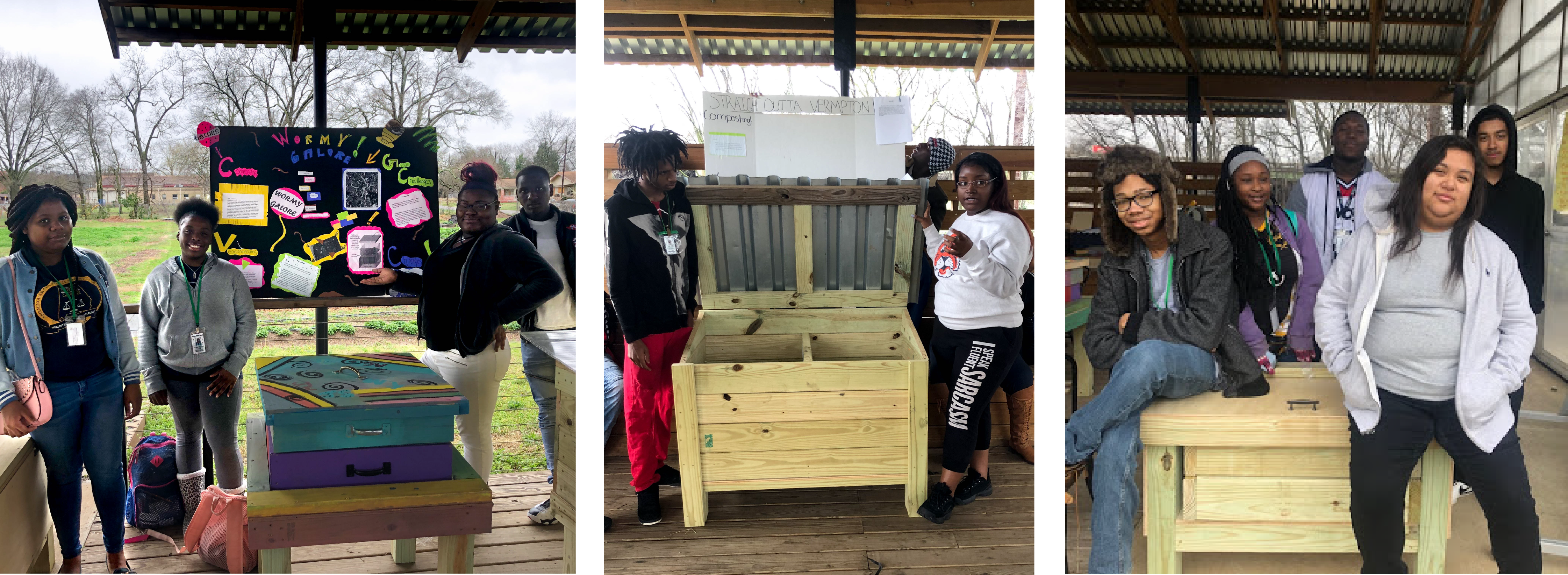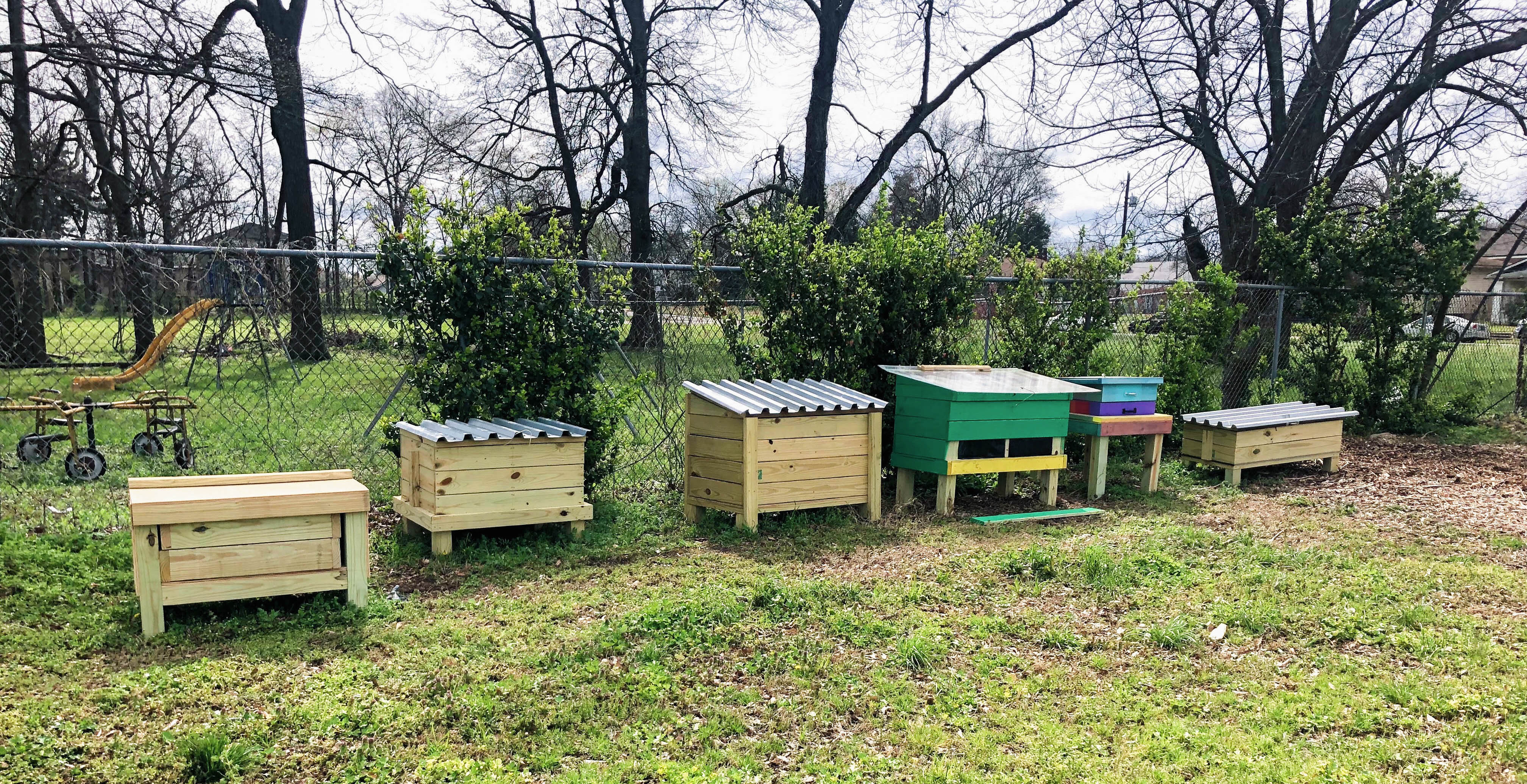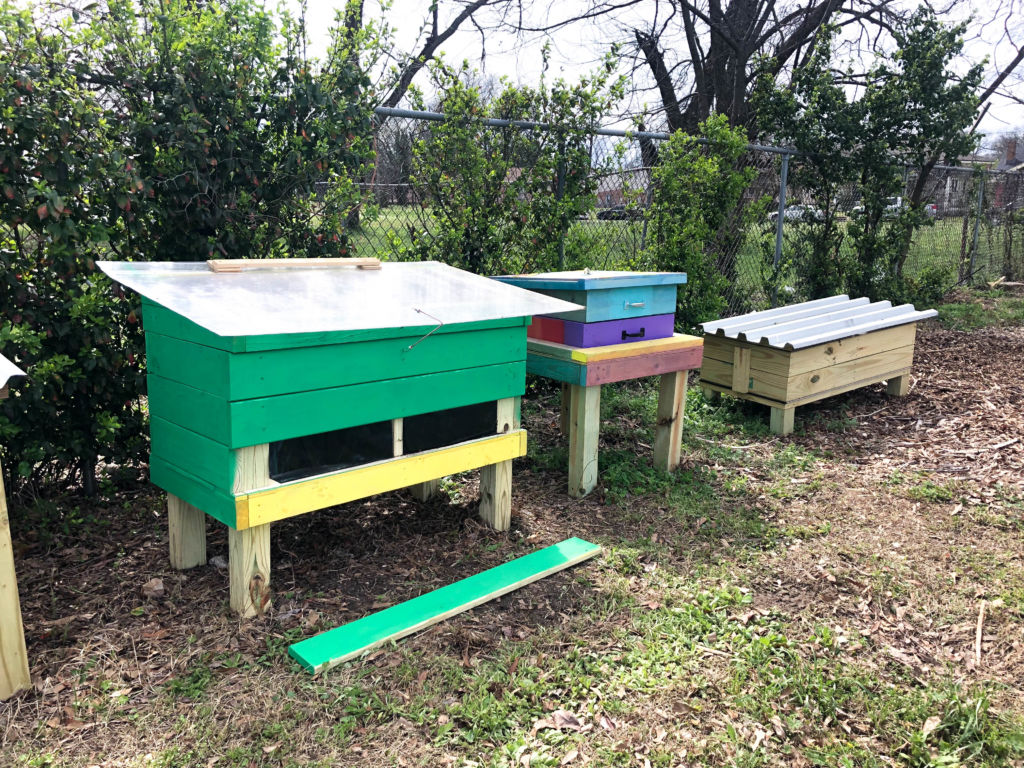Design-Build at Woodlawn High School: Vermicompost Bins!
March 12th, 2019Exciting things have been happening on the Teaching Farm at Woodlawn High School! This February, two Environmental Science classes (lead by Scotty Feltman, WHS Program Director, and other JVTF Staff) completed an impressive design-build project: vermicompost bins! This unit served as a hands-on immersion into the concept of Nutrient Cycling, nature’s method of recycling. This cycle plays an important role on all of our Teaching Farms as we strive to return nutrients to the soil and reduce waste through composting. Beginning in November, these classes had the opportunity to explore the Nutrient Cycle in depth, studying the importance of soil health, the needs of worms, and the basics of composting.
STEP ONE: Explore the Problem and Gather Background Information
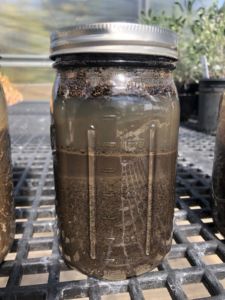 Students first participated in a guided exploration of the Teaching Farm at Woodlawn High School to build a base of knowledge around soil fertility. They administered soil tests from four locations on the farm – a finished compost pile, a vegetable bed, an area near the pond, and an area covered by a tree canopy. They measured the pH, moisture levels, color, and texture, and observed the surrounding environment with these tests. Students used this data to create a hypothesis that stated which soil they believed to be the healthiest. A consensus emerged among the groups: the darker the soil the healthier everyone believed it to be. From there, it was time to investigate different factors and organisms that contribute to healthy soil – specifically worms!
Students first participated in a guided exploration of the Teaching Farm at Woodlawn High School to build a base of knowledge around soil fertility. They administered soil tests from four locations on the farm – a finished compost pile, a vegetable bed, an area near the pond, and an area covered by a tree canopy. They measured the pH, moisture levels, color, and texture, and observed the surrounding environment with these tests. Students used this data to create a hypothesis that stated which soil they believed to be the healthiest. A consensus emerged among the groups: the darker the soil the healthier everyone believed it to be. From there, it was time to investigate different factors and organisms that contribute to healthy soil – specifically worms!
As students began learning about vermicomposting, a lot of questions began to arise. Vermicomposting refers to the use of worms as the main agent of decomposition. But what factors and environments are conducive to vermicomposting? The students’ research lead them to discover that worms like dark, moist places which many gardeners and farmers use to their advantage by making vermicompost bins. Conducting further research, students compared and contrasted various types of vermicompost bins. They discussed the pros and cons of each, using their understanding of the needs of worms to assess which features would contribute to the failure or success of a vermicompost bin.
STEP TWO: Design and Build Solutions
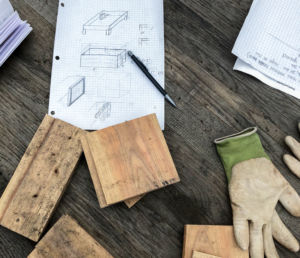 Next, students began to push their own creativity and critical thinking as they worked in small groups and began to sketch an initial design. Everyone was eager to share their design with their peers, allowing for constructive feedback at an early point in the design process. After presenting and making necessary adjustments, each group developed a comprehensive list of materials to be purchased. Upon receiving their materials, groups were responsible for planning the sequence of events that needed to occur in order to assemble their bin. With the assistance of a JVTF staff member, each group started construction in early January.
Next, students began to push their own creativity and critical thinking as they worked in small groups and began to sketch an initial design. Everyone was eager to share their design with their peers, allowing for constructive feedback at an early point in the design process. After presenting and making necessary adjustments, each group developed a comprehensive list of materials to be purchased. Upon receiving their materials, groups were responsible for planning the sequence of events that needed to occur in order to assemble their bin. With the assistance of a JVTF staff member, each group started construction in early January.
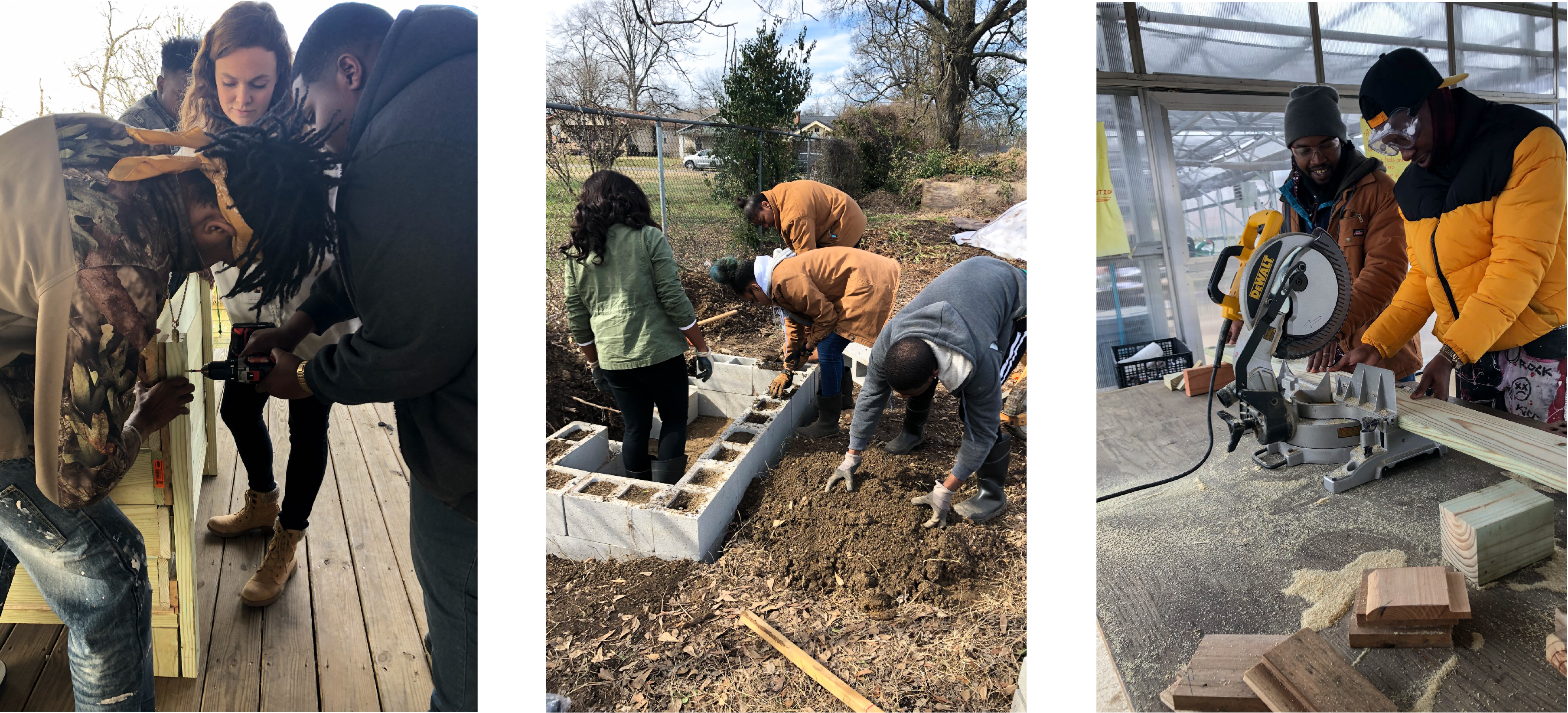
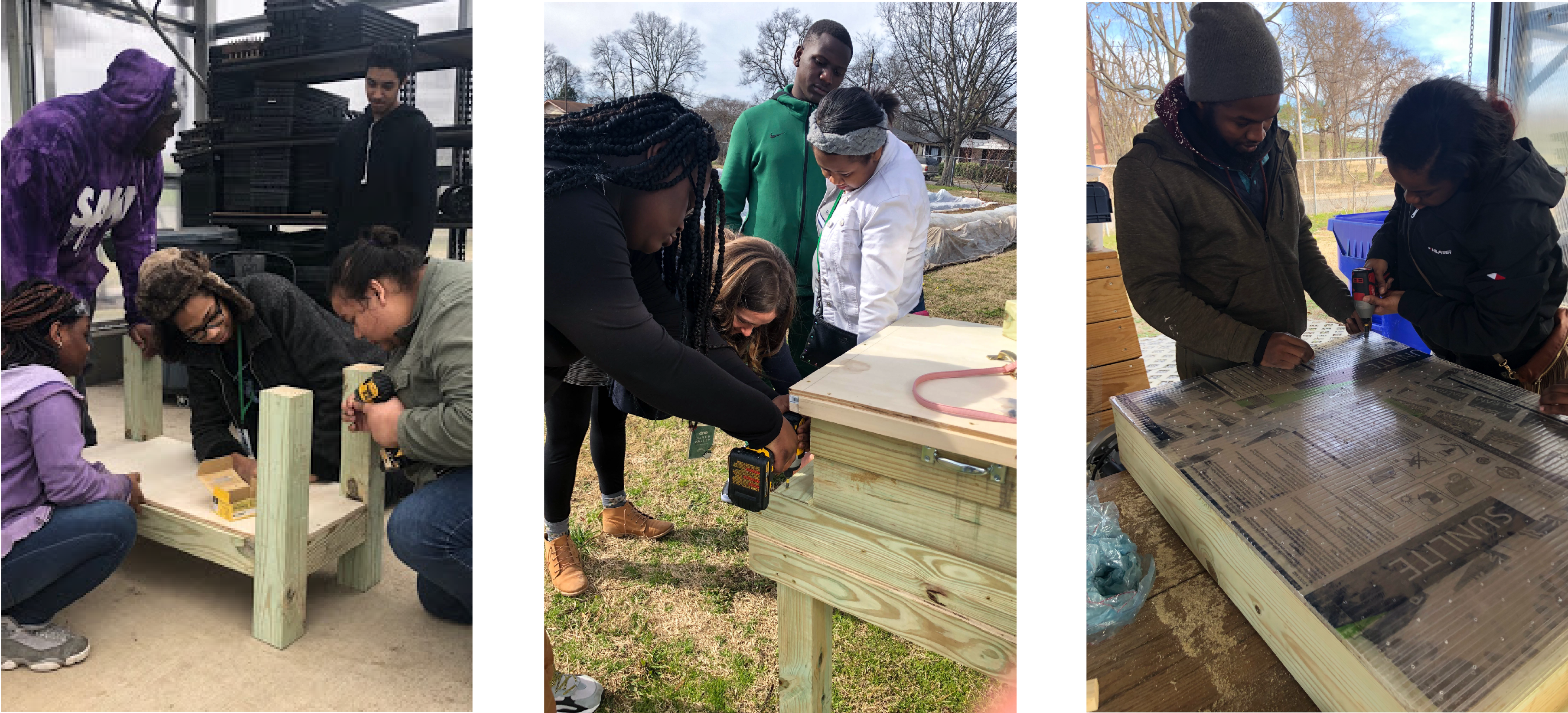
STEP THREE: Present Finished Product
By the end of February, it was time to add the finishing touches and present their completed projects. Each team presented to their peers, JVTF staff members, and WHS administration. Besides revealing their bins, they also reflected on their experience working as a unified team to overcome design obstacles and create a successful product. When asked, “What will you take away from this experience?” students said:
- “I never thought I would learn how to build in a science class. I learned so much about worms and their contribution to soil, and most definitely had fun.” (Bobby W.)
- “I really enjoyed the building process. I didn’t think I would be doing that.” (Aaliyah B.)
The completed vermicompost bins will be utilized on the Teaching Farm at Woodlawn High School, so that scraps from the farm and kitchen can be composted and continue to add nutrients back into the soil!
